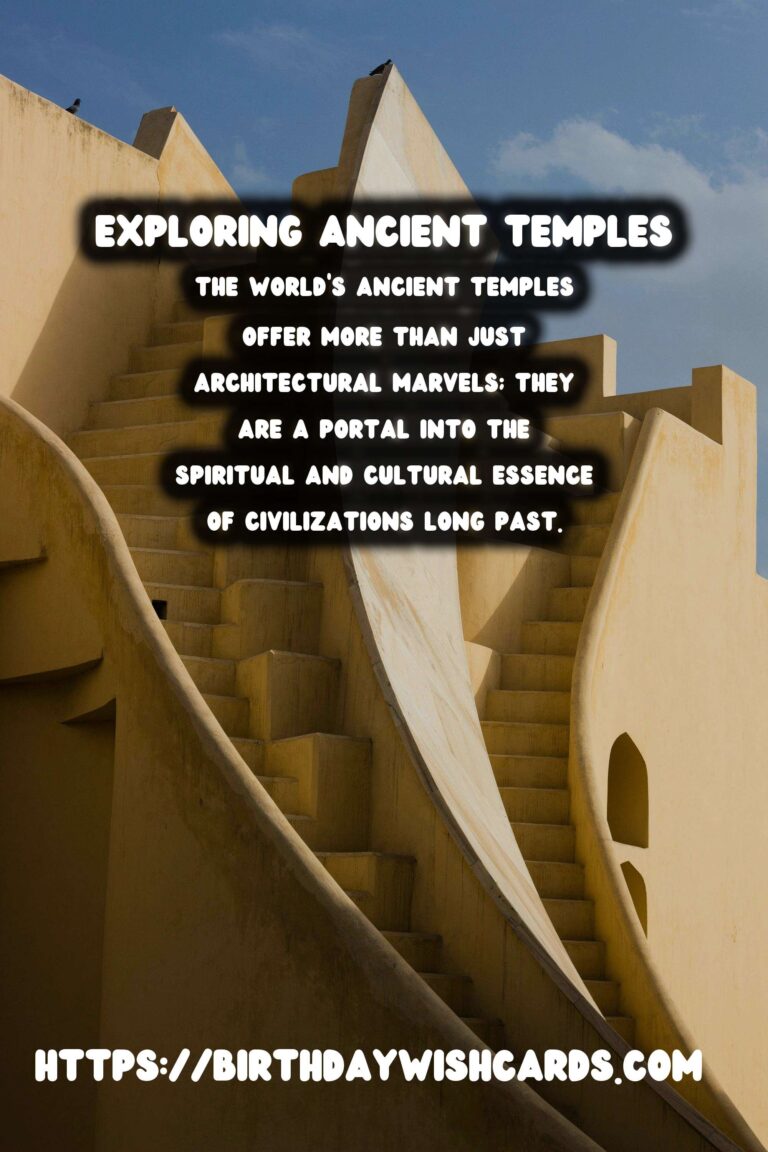
The world’s ancient temples offer more than just architectural marvels; they are a portal into the spiritual and cultural essence of civilizations long past. From the intricate stone carvings of Angkor Wat to the enigmatic mysteries of Stonehenge, these structures stand as silent witnesses to historical epochs characterized by devotion and artistic mastery.
The Significance of Ancient Temples
Ancient temples are fascinating not only because of their grandeur but also due to their historical significance. These temples provide insight into the religious practices, social norms, and technological advancements of the societies that built them. Scholars and spiritual seekers alike are drawn to these sacred sites, each offering a unique perspective on the evolution of human civilization.
Renowned Temples Around the World
Angkor Wat, CambodiaPerhaps the most famous of all, Angkor Wat is a temple complex that stands as a testament to the Khmer Empire’s grandeur. Dedicated to the Hindu god Vishnu, it later became a Buddhist temple. Its layout, representing the universe in miniature, is a masterpiece of architectural symmetry and religious symbolism.
The Parthenon, GreeceLocated atop the Acropolis in Athens, the Parthenon is a former temple dedicated to the goddess Athena, whom the people of Athens considered their patron. Its Doric columns and sculptural details exemplify the heights of Greek architectural and artistic achievement.
Stonehenge, EnglandA prehistoric monument of standing stones, Stonehenge’s exact purpose remains a well-debated mystery. While not a temple in the traditional sense, its alignments suggest it served as an ancient astronomical observatory, imbued with spiritual significance.
Chichen Itza, MexicoA large pre-Columbian city built by the Maya civilization, Chichen Itza is home to the Temple of Kukulcan, also known as El Castillo. The design of this pyramid reflects the Mayan calendar, with 365 steps representing the days of the year.
Spirituality and Architecture
The construction of ancient temples was as much a spiritual endeavor as it was an architectural one. These structures often symbolized the cosmos, the divine, and the connection between earth and sky. Intricately detailed carvings and statuary provide a glimpse into the deities worshipped and the myths celebrated, capturing the divine in tangible form.
Modern-Day Pilgrimages
Today, these ancient temples serve as popular pilgrimage sites, attracting millions of visitors each year. For many, visiting these sites is not only about witnessing the architectural genius of ancient civilizations but also experiencing a connection with the past. Whether through meditation, prayer, or simple reflection, visitors often report feeling a profound sense of peace and enlightenment.
Preservation and Challenges
The preservation of ancient temples is an ongoing challenge. Exposure to natural elements and human activity pose significant threats to these sites. Efforts by international organizations and local governments to restore and maintain these temples are crucial to their survival. The need for sustainable tourism practices is increasingly recognized to ensure that future generations can also experience these spiritual journeys through time.
Conclusion
Exploring ancient temples offers a profound spiritual journey that connects us to our human past and cultural heritage. These sacred spaces remind us of the enduring quest for meaning and the remarkable capacities of human creativity and devotion. Whether you are a history enthusiast, a spiritual seeker, or simply a curious traveler, the temples of the ancient world await to share their timeless tales.
The world’s ancient temples offer more than just architectural marvels; they are a portal into the spiritual and cultural essence of civilizations long past. From the intricate stone carvings of Angkor Wat to the enigmatic mysteries of Stonehenge, these structures stand as silent witnesses to historical epochs characterized by devotion and artistic mastery. 
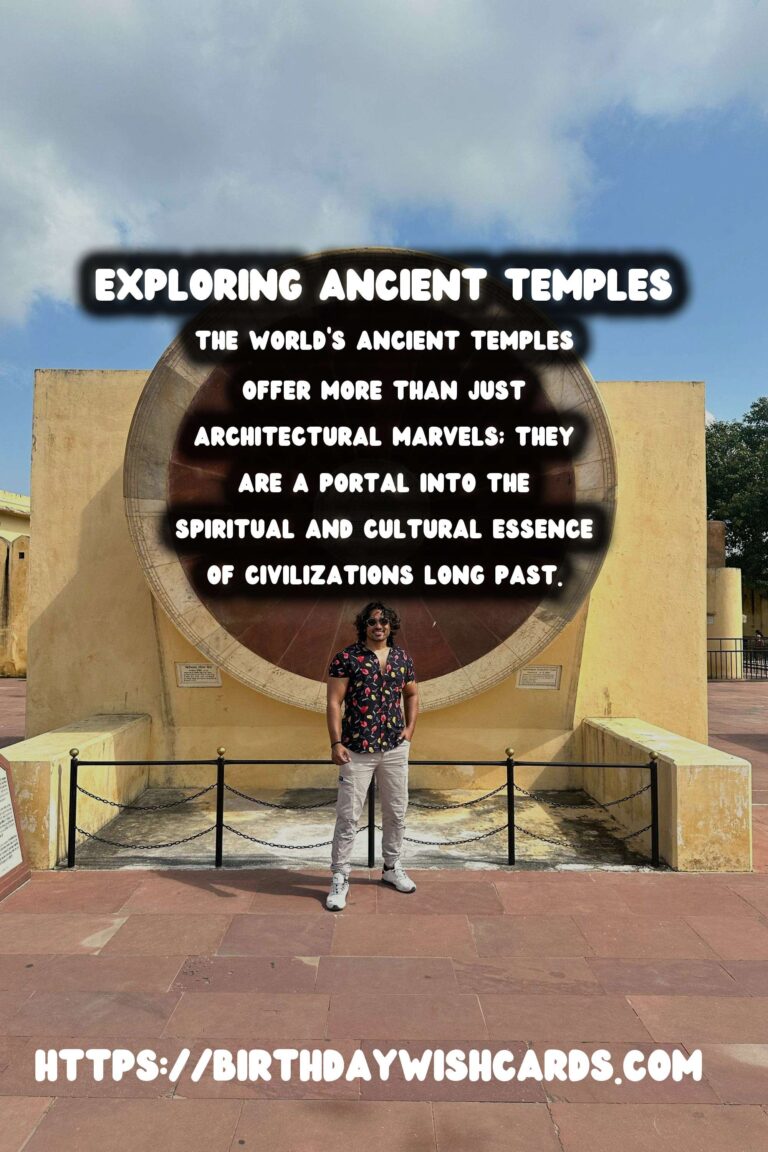
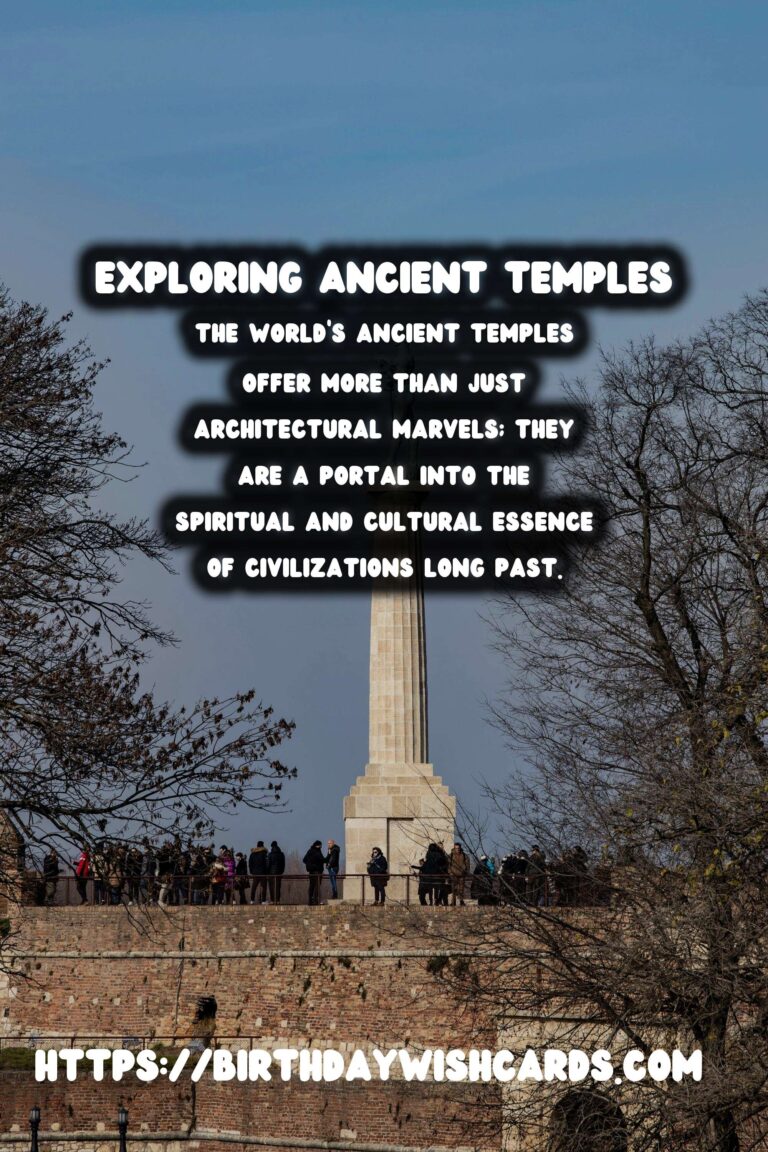

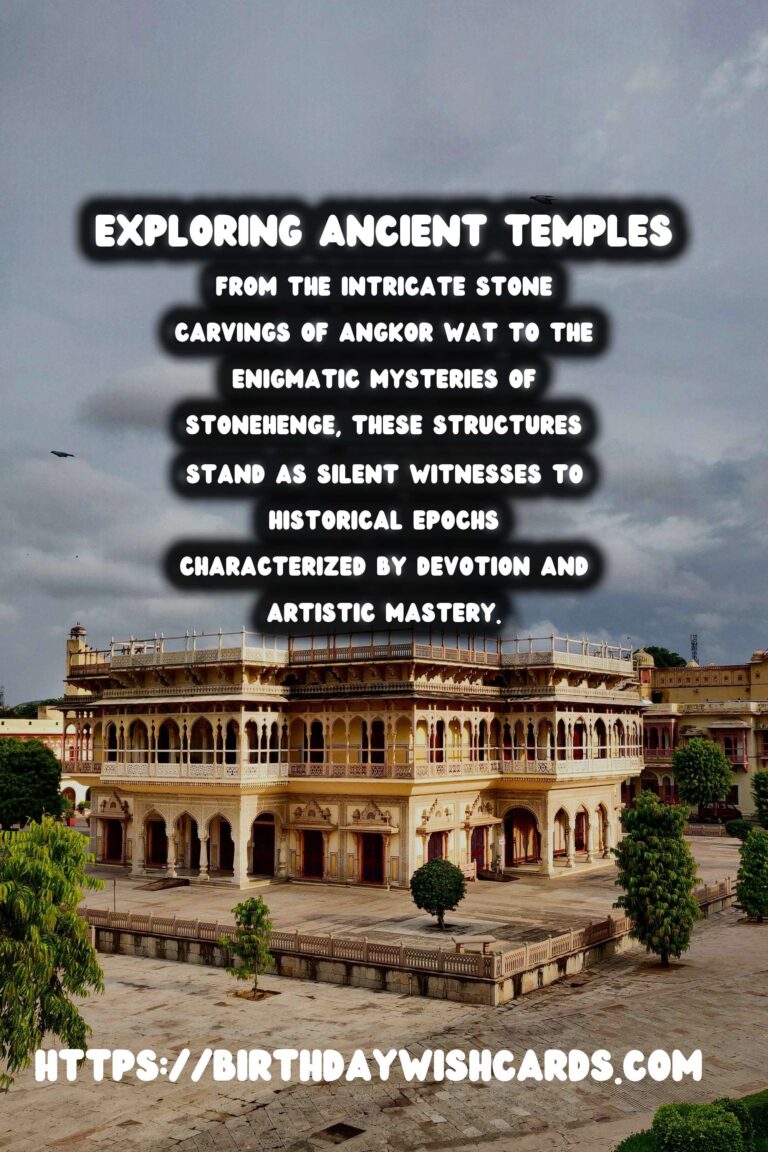
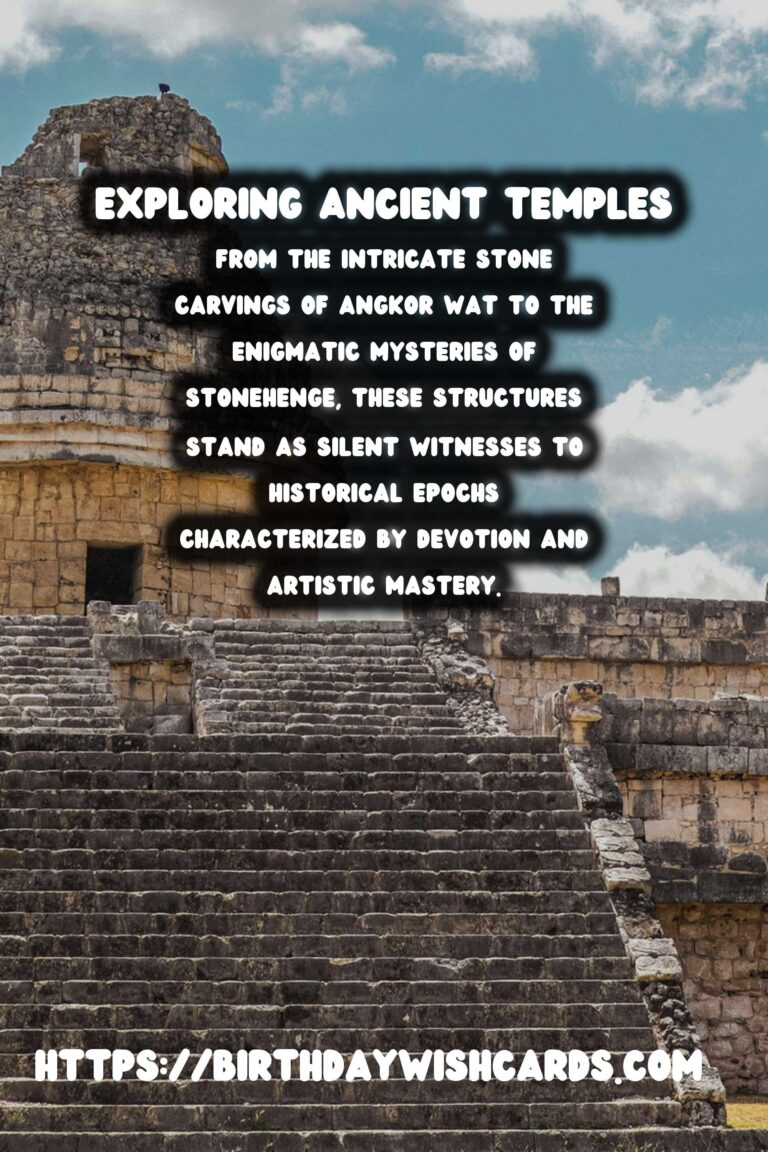


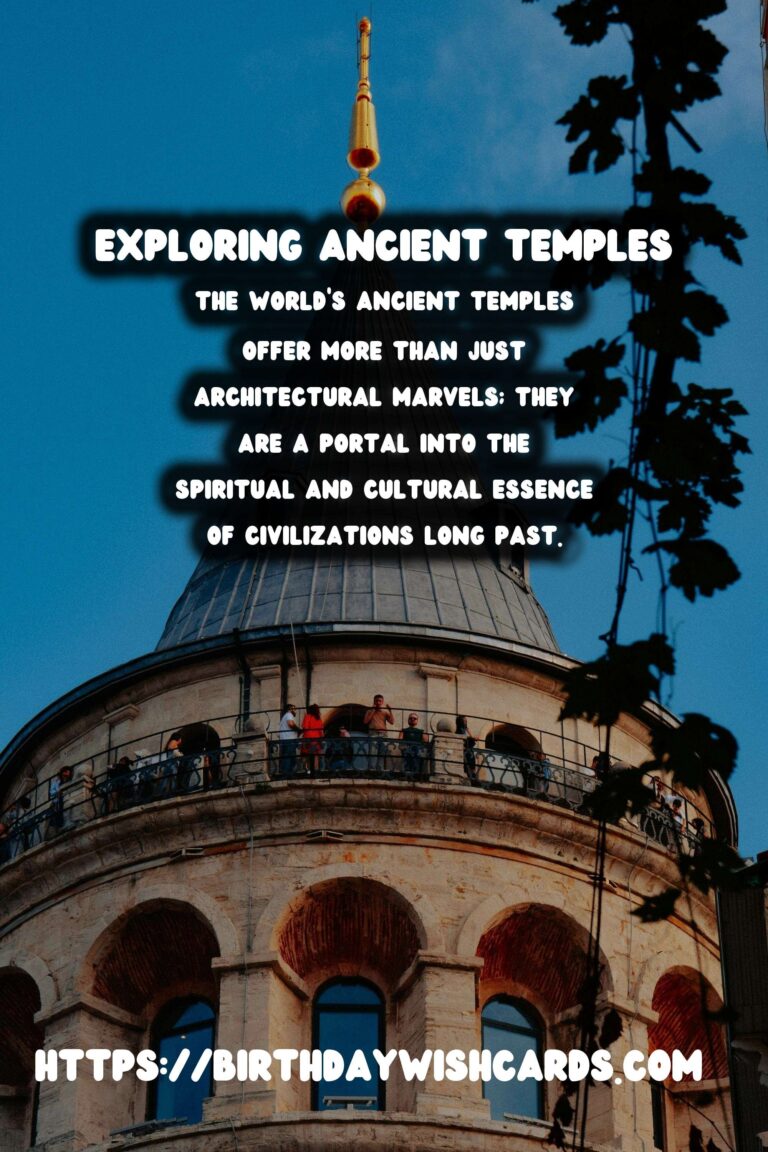
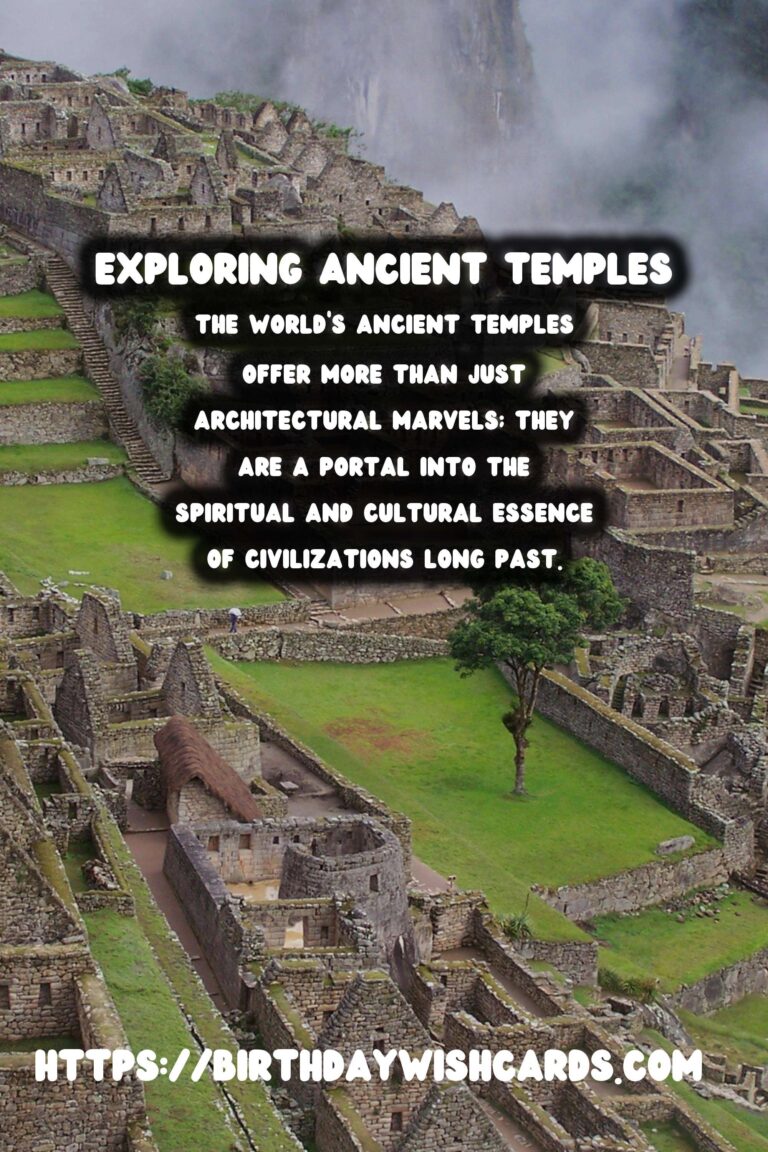
#AncientTemples #SpiritualJourneys




